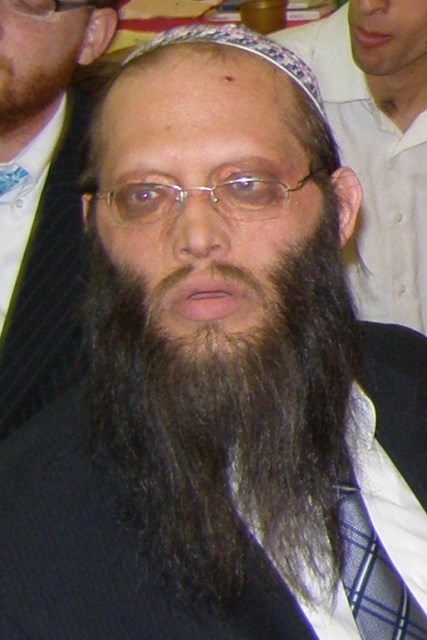Tzitzis- Defining and Refining
הרב דני זוקרמן
Parshas Shelach concludes with the mitzva of tzitzis, a mitzvah almost unparalleled in its ubiquity. However, mitzvas tzitzis stands out not only because we wear them all day and every day, but because it is one of the rare mitzvos which is equivalent to all the rest of the the mitzvos.
"וראיתם אותו וזכרתם את כל מצות השם"
We should look at our tzitzis and remember all the mitzos of Hashem.
Rashi quotes Chazal that tzitzis is שקולה ככל המצוות. It is in the same league as Shabbos and Avoda Zara.
What about wearing tzitzis places it into such exclusive company? Unlike Avoda Zara and Shabbos, tzitzis doesn’t seem to relate to core beliefs such as the unity of Hashem or creation ex nihilo. It also doesn’t cost much money and it doesn’t even take much effort. Tzitzis would seem to be the epitome of an easy mitzvah. There is even a story that the Vilna Gaon was crying on his deathbed because in Olam Hazeh, for just a few coins you can purchase tzitzis and do a mitzvah all day and every day, while in Olam Haba all the money in the world can’t purchase a mitzvah.
So what makes wearing tzitzis so significant that it is equivalent to all other mitzvos?
Perhaps the answer can be found just a few lines later in Rashi.
"על כנפי בגדיהם"- כנגד ואשא אתכם על כנפי נשרים ואביא אתכם אלי
The four corners of the tzitzis are related to the wings of eagles on which Hakadosh Baruch Hu carried us toward Him.
Chazal here are noting the multiple connotations of the term כנף, but what indeed is the relationship between the corners of a garment and the wings of an eagle?
Linguistically, we can simply explain that the term כנף can mean not only “wing,” but any “edge” or “corner.” For example, the corners of a garment or the “ארבע כנפות הארץ”, the four corners of the Earth.
However, Chazal in the above midrash are not merely clarifying the linguistic relationship between a wing and a corner. Chazal are highlighting for us the significance of mitzvas tzitzis and how wearing tzitzis can indeed be so transformational.
What does it mean that Hashem took us on the wings of eagles? On the one hand, it implies a protective environment, safe from attack. Rashi comments on this aspect of כנפי נשרים in his explanation of the pasuk in Yisro 19:4.
But there is an additonal element of כנפי נשרים as well. The imagery of soaring above the ground expresses the point that when Hashem took us out of Egypt, it wasn’t only for our physical safety, but to literally raise us above the decadent society in which we were immersed. The eagle’s wings were not only protective, they delivered us to a higher atmosphere; ואביא אתכם אלי.
Rashi develops this point further when he says that the four corners of the tzitzis correspond to the ארבע לשונות של גאולה. Yetzias mitzrayim was not only for the sake of liberation from the Egyptians (והוצאתי והצלתי), but to bring us into an intimate relationship with Hakadosh Baruch Hu (וגאלתי ולקחתי).
When Hakadosh Baruch Hu took us out of Mitzrayim, it was an express trip straight from the depths of a morally bankrupt society to Hashem’s rarified atmosphere. This sudden transformation was necessary for the time, but not a sustainable model for long term commitment to an elevated way of life. How does Hashem guide us to steadily and consistently pursue that goal? One crucial element is the simple, daily act of wearing tzitzis.
The tzitzis on our כנפים serve the same function as the כנפי נשרים. They raise us above the decadence of the material world and place into a more refined atmosphere, a world of Torah, mitzvos and kedusha.
Tzitzis define us and tzitzis refine us. For example, when a person overhears inappropriate language or topics of conversation, is he drawn in or repulsed? It will depend on his self-identity. Hashem took us out of Egypt in order to refine our character, so that we live in this world but define ourselves based on otherworldly values. That we soar above the base values and pursuits of Egyptian society and all others like it.
Although tzitzis are neither expensive nor burdensome, wearing tzitzis is still שקולה כנגד כל המצוות because of its impact on our identity. Davka because wearing tzitzis is simple and unobtrusive, it easily slips into our daily routine and life’s mission to live a life defined by Hashem’s values.
השיעור ניתן בכ' סיון תשפ"ד
קוד השיעור: 9419
לשליחת שאלה או הארה בנוגע לשיעור:

.jpg)
 (1).jpg)

.jpg)

.jpg)

.jpg)